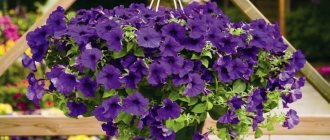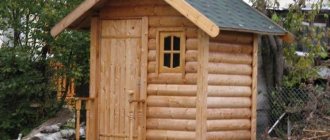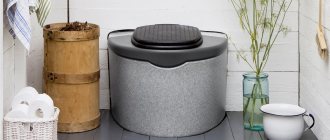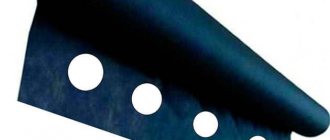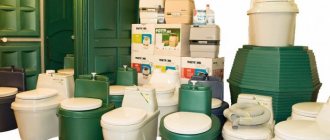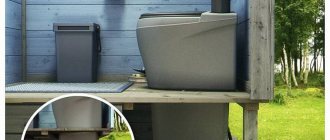An installed decorative fountain will help add a special, unforgettable decorative touch to any garden or room. This is a great solution if you want to diversify the design of your home or site.
A home fountain has a special appeal. The murmuring water lifts your spirits; it will always be pleasant to relax near it, because where else, if not here, has such a suitable atmosphere for reflection and philosophizing been created? It’s not without reason that there is a saying that a person can look at rushing or falling water for an eternity.
From this article you will learn what types of decorative fountains there are and what their features are. We hope that the advice from our blog nedvio.com will help you choose the best solution for your country house.
Design features of garden fountains
The wide variety of garden fountains is caused by the desire of manufacturers to satisfy the most diverse tastes that site owners may have. The optimal combination is small size and impressive appearance.
According to the installation method, they are distinguished:
- Submersible. They are used if there is a body of water on the site. This device is a nozzle through which water is supplied using a submersible pump installed under water. Design features allow this system to use electricity economically and operate quietly. It is mandatory for her to dismantle the equipment for the winter.
- Stationary. Such a device can be installed anywhere in the garden, garden or summer cottage. Water is supplied through certain nozzles, which then flows into the bowl. Such fountains are often made from natural stone.
Based on architectural features and methods of supplying water flow, the following types can be distinguished:
- Wells and springs. They are often decorated with various architectural elements.
- Ponds of simple geometric shape (square, circle, rectangle). If the area allows, then make several vertical jets of water.
- With one or more bowls. They are installed in the center of the reservoir into which water jets from such containers flow.
- Sculptural. They can be real works of art and have different fancy shapes.
- Cascade. They consist of several bowls, from which water is poured from one container (stage) to another.
Did you know? From Latin, fountain is translated as “spring”, “key”. For the ancient Romans and Greeks, these structures were primarily sources of drinking water.
Based on the dynamics of the water composition, the following types of fountains are distinguished:
- Static. They do not change the water form - the same form of water flow is before your eyes.
- Dynamic. Various water compositions are recreated according to the established program.
- Light-dynamic. Water shapes and lights of different colors alternate depending on the software set.
- Light and music. These are “singing” and “dancing” fountains that have different lighting depending on the configured program.
Water filtration system
It is necessary to filter the water even in a small fountain. Manufacturers offer a huge range of filters that are connected to a pumping device. These can be simple mesh structures installed on the suction pipe of the pump. Or a more complex structure that is connected to the pumping unit via pipes or hoses. The purpose of such a filter is not only to retain debris, but also fine sand.
Some filter models carry out biological water purification. Today in stores you can purchase installations that purify water with ultraviolet light, turning it practically drinkable. That is, scientific and technological progress in terms of purification of water masses has reached quite great heights. The matter again comes down to the capabilities of the owner of the fountain, that is, how much money he is willing to invest in the hydraulic structure.
Filter for water purification in a fountain Source pondfish.su
What types of garden fountains are there?
Although all fountains have the same purpose and basic principle of operation, through the efforts of designers, many varieties of these devices have been created. They can be divided into groups in different ways, depending on which feature is taken as a basis. First of all, the most obvious ones are taken into account - location and shape.
Find out also about flowerpots in landscape design.
Ground fountain
The ground version consists of a reservoir filled with water and pipes through which water flows move using pumps, as well as other elements of the device (nozzles, nozzles, filters, etc.). If desired, it can be equipped with lighting and melodic music.
This is the most common type of classic fountain. Even in Ancient Greece, they were used as reservoirs for storing water, which at the same time decorated the city with their appearance.
Underground
The underground type of this device is a more modern option. It does not have a reservoir for storing water, but may have a bowl that is hidden underground. Such a container consists of several communicating channels located at different depths and having different sizes.
All communications are hidden by decorative elements or slabs. The nozzles through which water flows pass are attached directly to the slab. This option does not need to be dismantled in winter.
By shape
Special nozzles are used to shape the water jet. The fountain device may contain a set of nozzles that can be used to change the shape of water flows.
Pay attention to the features of using decorative crushed stone in landscape design.
The most expensive nozzles are made from aluminum bronze. This material resists corrosion processes well and has a beautiful aesthetic appearance. Nozzles made of brass and stainless steel will be cheaper. Inexpensive plastic nozzles are often used for summer cottages. True, this material does not last long and is not suitable for large water flows.
Below are the most popular devices for shaping a water jet.
Bell
The “bell” nozzle is a pipe with a disk from which water flows under pressure. As it moves downward, it forms a water dome resembling a bell.
Important! A fountain with a bell-shaped nozzle is placed in a windless place, since gusts of air currents will disrupt the shape of the hemisphere.
Such a nozzle often has 2 disks located at some intervals between each other. The thickness of the flow, which takes the shape of a hemisphere, depends on this gap. Typically, such a nozzle is used for small bodies of water. They are often installed in groups.
Hemisphere
The hemisphere (or hemisphere) consists of a ball nozzle with numerous tubes emerging from its upper half. Water is released from them under pressure, forming a hemisphere. If the tubes are located over the entire surface of a spherical nozzle, then this option is called a sphere. When operating, these fountains look like large water dandelions.
Fish tail
In a fishtail nozzle, the nozzles are positioned at an angle of 30–40 degrees. The water jets shoot up individually and fall down beautifully. Due to the location of the pipes and the pressure, they do not form a solid wall, more like a cascade. In some of these fountains, lighting is installed for each jet, which looks very impressive.
Tiffany
The design of this nozzle is a cross between a “bell” and a “fishtail”. It contains these two nodes, creating an interesting composition. They are subject to unequal pressure, and one water flow lies on top of the other. The pressure in the nodes can be adjusted: in the “bell” it should be greater than in the “fishtail”.
Tulip
This nozzle is similar to a “bell” - its nozzle consists of two disks. Only the “tulip” has a continuous stream of water coming out of them not horizontally, but at an upward slope of 30–40 degrees. This leads to the formation of an upward flow inside the water dome. If there are two such nozzles on one nozzle, you will get a “bouquet” with two similar tiers. Both options look like a flower.
Ring
The nozzle is made in the form of a ring with holes around the perimeter. Guide nozzles of small diameter (up to 1 cm) are inserted into each of them. They are equidistant from each other and release identical thin jets in different directions. Sometimes other attachments (for example, “spinners”) are installed in such holes and the fountain changes its appearance.
Useful tips
What to look for when purchasing a fountain pump:
- It is better to buy a complete set with nozzles , hoses , pressure regulator , sprayers and other small things.
- The pump must be made of materials that are not subject to corrosion .
- Submersible pumps are more expensive than surface pumps.
- good if the package includes: a tee , which will help distribute the water flow into two circuits, a shut-off valve installed on the supply circuit, and an adapter pipe . With the help of the latter, it becomes possible to change the pressure on the supply circuit.
- Buy sprinkler heads equipped with LEDs .
The use of fountains in landscape design
A wide variety of fountain options can enhance and enliven any landscape design. There are options that will fit even the most sophisticated garden style. Almost everywhere, tiered fountains in the form of artificial waterfalls and stone bowls will look good. If there is a body of water (pond, stream) at your summer cottage, then placing a fountain in it would be an excellent option. It would be good to plant aquatic plants near it and put fish in them.
Important! It is not recommended to place the fountain under trees and bushes, whose foliage will pollute it, or next to plants, buildings and design elements that cannot tolerate excess moisture. At the same time, a place that is too sunny is also undesirable, since overheating causes algae in the water and breakdown of technical components.
The fountain can be beautifully decorated with a sculptural composition. Antique sculptures will look good in a classic or Mediterranean style; on a children's playground - an option with figures of children or fairy-tale characters. A patio or other seating area can be decorated with many different types of these hydraulic features. The main thing is to find the right place for them.
Even in a small area, you can place different types of fountains - wall-mounted and wall-mounted, portable and in the form of a water wall. The latter look very avant-garde and interesting, take up little space and can be located in different places.
You may find information about the use of amphorae in landscape design useful.
Well-chosen lighting will help enhance the beauty of the selected water composition. It can be underwater and surface, of the same type, or colored, flashing. Some summer residents install themed lamps at fountains in the form of glowing figures of butterflies and flowers.
So, garden fountains can have different designs and nozzles for forming a jet. If you wish, you can always find a place at your summer cottage for such a decorative element of landscape design and choose an option to suit your taste.
Selection of necessary equipment
To make a fountain with your own hands, you will need to prepare the following materials:
- Decorative stone for frame construction.
- A ready-made plastic installation, if you decide to use such a model.
- Fountain pump to circulate water.
- Decor elements.
- A set of tools for mounting the system.
There are methods for connecting a fountain to a central water supply, but this method is not financially profitable. Therefore, it is best to use a pump: a submersible or surface version (each has its own characteristics, so the choice is up to the master).




